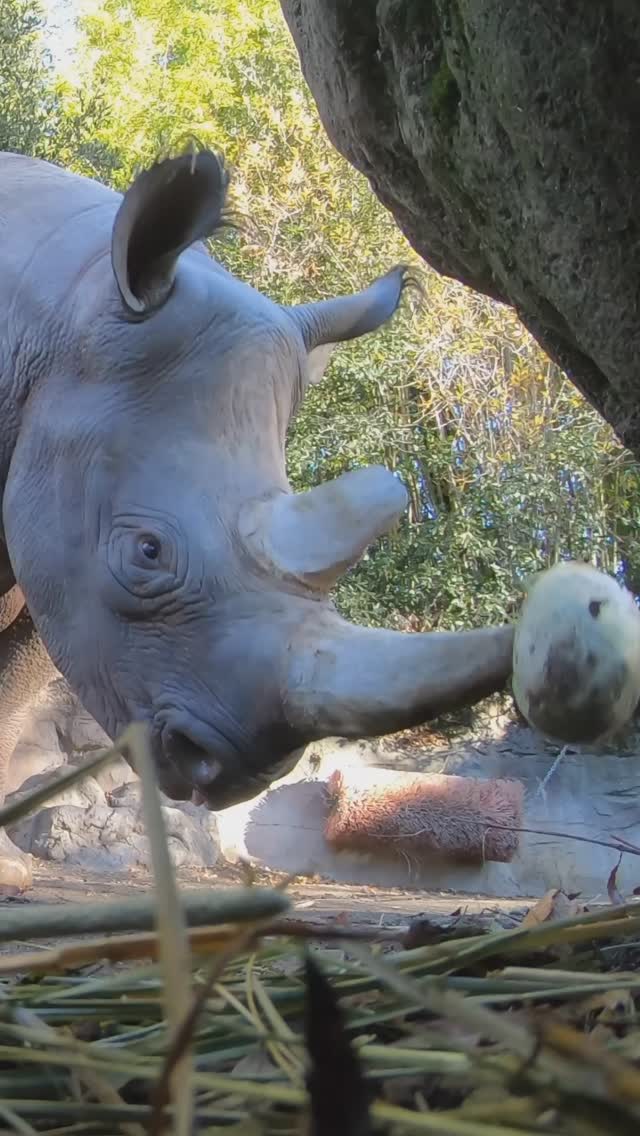- Examination of the role of cantaloupes in zoo diets and animal enrichment activities.
- Analysis of animal behavior and interaction with food items in zoological settings.
- Insights into zoo management practices and the importance of creative enrichment strategies.
- The significance of wildlife conservation efforts through public engagement and education.
- Understanding the impact of social media on wildlife awareness and conservation initiatives.
Cantaloupes are not just a delicious summer treat for humans, but they play a surprising role in zoological settings as well. Particularly, they are utilized to provide both dietary benefits and interactive enrichment for a variety of animals within zoos. This dual-purpose approach is essential, as it contributes significantly to the mental and physical well-being of animals in captivity. The incorporation of cantaloupes and similar items into the diets of zoo animals is a carefully considered practice, aligning with the broader goals of providing a balanced and nutritious diet while also introducing stimulating challenges for the animals to engage with their environment more holistically.
Interactive enrichment, such as the introduction of cantaloupes, is crucial in promoting natural behaviors and preventing the onset of stereotypical actions that can arise in captive environments. Animals often engage in profound, instinctive exploratory behavior when presented with these novel food items. In a well-managed zoo, you’ll observe elephants, bears, and primates, among others, expressing heightened curiosity and playfulness when interacting with a cantaloupe. Elephants might use their trunks to toss or smash it, while primates could show dexterity in peeling or manipulating the fruit. These actions not only mimic foraging behaviors found in the wild but also stimulate the animals cognitively, encouraging problem-solving skills and reducing boredom.
Zoo management faces the ongoing task of creating a stimulating environment that supports both the health and enrichment of its inhabitants. To achieve this, managers must continuously innovate and introduce diverse enrichment techniques. This might involve the strategic placement of cantaloupes to simulate natural foraging experiences or the integration of such fruit into puzzle feeders that challenge animals to access their treat. These activities are part of broader enrichment programs that aim to engage animals’ senses and promote physical activity. Furthermore, they provide zookeepers the opportunity to observe behavioral changes and conditions, which is critical in developing individualized care plans for each animal.
Wildlife conservation within zoo contexts extends beyond the physical care of animals, encompassing educational outreach and public interaction. Zoos serve as hubs for learning and engagement, allowing visitors to gain firsthand insights into animal behaviors and the ecological dynamics of various species. By witnessing a large feline skillfully tearing into a cantaloupe or a family of primates sharing and playing with their fruit, the public can develop a deeper appreciation for these creatures and an understanding of the nuances of wildlife ecosystems. This awareness is pivotal in fostering a community that values and supports conservation efforts, contributing to larger conservation missions globally.
In recent years, social media has emerged as a powerful tool for raising awareness and increasing public participation in wildlife conservation. Platforms like Instagram and Facebook have allowed zoos to share captivating images and videos of interactions involving simple elements, such as a cantaloupe. This media can go viral, drawing attention to both the enrichment activities and the larger conservation messages they support. “That cantaloupe didn’t stand a chance…” might not only capture a memorable moment but also serve as an entry point for audiences to engage with broader discussions on biodiversity conservation and the vital role that zoos play in these efforts. Engaging storytelling through digital platforms can significantly enhance public understanding and support for critical wildlife initiatives, making social media a formidable ally in contemporary conservation strategies.
Through the integration of cantaloupes and similar enrichments, zoo management not only addresses the immediate needs of the animals but also contributes to the overarching mission of promoting wildlife education and conservation. Each cantaloupe interacts with animals, creates teachable moments, and enriches zoo visitors’ experiences. Together, these activities underscore the multifaceted roles that zoos and the larger zoological community play in preserving biodiversity and inspiring future generations to care for the planet.
*****
Source Description
That cantaloupe didn’t stand a chance


